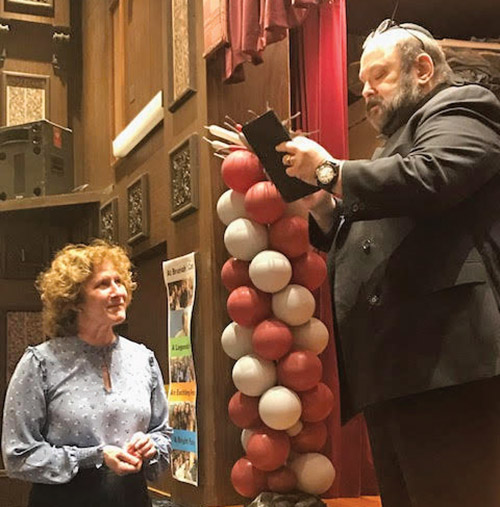



Psychologist, NYU psychology professor, corporate and business marketing presenter, law enforcement consultant, author, internationally acclaimed mentalist—all titles that fit Marc Salem. He shared that he is also a happy husband, proud grandfather and grateful son raised in an Orthodox rabbinic environment.
In an interview with The Jewish Link prior to his performance, Salem was quick to declare that his performance is neither magic nor sleight of hand, and no illusions. He said that there are “no stooges, or plants, and I don’t know anyone in the audience.” He further noted that he uses no electronics, or any kind of equipment for that matter. Basically, he disclaimed just about all of the arguments of the typical skeptic. Salem described himself as “a psychologist who has no patience for patients, and is a specialist in non-verbal communication.”
While there was nothing truly supernatural about the performance, many of the demonstrations indeed seemed supernatural…or maybe “hyper-natural” (I made that up), because they appeared to be above nature. But Salem claimed otherwise, as he conversed and sort of danced through his show with ease and command, using thought, ideas and notions to guide his perceptions.
In his performance, Salem used his well-honed skills of awareness, perception and knowledge of subtle but telling body language. It sometimes seemed like he was almost teasing information out of a person’s mind or eyes, to some external location where he could detect it. He said that he makes use of “well-known and fully transparent psychology techniques, perfected over years of practice and experience.”
Apparently, these techniques are what enable him to be effective in his work as a law-enforcement consultant.
In one of the demonstrations, audience member Shana Nunez identified a vacation location and experience on paper, while at her seat. Salem asked a few questions and then correctly revealed the location, and eventually a particular sculpture she had sought out and discovered. Her expression of surprise and disbelief was priceless.
Later, with Lynn Rosenzweig, Paul Gruber and Maddy Hoffman together onstage, Salem picked up a different random paperback book for each. Addressing each person separately, Salem flipped the pages until they stopped him. After each participant focused on a word from that page and closed the book, Salem correctly identified the word each one saw.
In another demonstration, Dovid Moradi and Daniel Eisman joined Salem onstage, and covered his eyes with several pieces of 2” duct tape. He then proceeded to correctly identify a number of random objects that they held up to the front and side of his head, although the wide tape crisscrossed in multiple directions completely obscuring his vision.
Next he asked Laurie Gruber to grab some loose change, close her hand and join him in front.
He looked everywhere but at her, and then named each coin and the total value of the change in her hand. He asked her to open her hand, identify the coins and count them. He was, of course, exactly correct in his accounting.
As a finale he asked various random audience members to call out an event, its location and a date. Joining Salem onstage, Harry Stadler was asked to remove Salem’s wallet from his jacket pocket and open the zipped compartment. Inside was a folded piece of paper, bearing the exact information the audience had just called out.
With even the biggest doubters stumped, the audience broke into an appreciative round of applause to end a great performance. The show was genuinely fun, enhanced by Salem’s dry and subtle humor.
Salem has been featured on 60 Minutes, the Graham Norton show, Brain Games on National Geographic and in theaters on Broadway and throughout Europe. If you have a chance to see him, you are likely to enjoy the show—and he probably already knows that!
By Ellie Wolf
�









